Leaning Vinegar

What are the pros and cons of using vinegar as a cleaning agent in homemade solutions ?
Using vinegar as a cleaning agent in homemade solutions has both advantages and disadvantages. It is a natural disinfectant, deodorizer, environmentally friendly, cost-effective, and versatile. However, its acidic nature can damage certain surfaces and materials, and its strong smell may not be desirable in some environments. It is essential to understand the properties of vinegar and use it appropriately to avoid damaging surfaces or leaving behind unwanted odors.

Can vinegar be used as a natural stain remover for clothes ?
Vinegar can be used as a natural stain remover for clothes due to its acidic properties and antimicrobial benefits. It is effective in removing various types of stains, including grass, blood, wine, coffee, tea, and sweat. To use vinegar as a stain remover, apply it directly to the stain, let it sit for 5-10 minutes, scrub gently, rinse with cold water, and wash according to care label instructions. Vinegar is cost-effective, environmentally friendly, and versatile. However, it should be tested on an inconspicuous area before use and avoided on delicate fabrics.

How do I make a non-toxic all-purpose cleaner using vinegar and baking soda ?
Vinegar and baking soda can be combined to create a non-toxic all-purpose cleaner. Ingredients include white vinegar, water, baking soda, a measuring cup, and a spray bottle. Mix one cup of vinegar with one cup of water and add one tablespoon of baking soda. Shake well before using on most surfaces. Test on a small area first and avoid use on certain surfaces such as marble or unfinished wood. This homemade cleaner is effective, environmentally friendly, and cost-efficient.

What are some effective home cleaning hacks ?
The article provides a comprehensive list of cleaning hacks for different areas of the home, such as the kitchen, bathroom, living area, and laundry room. Each section includes various tips and tricks to make cleaning easier and more efficient. For example, in the kitchen, using baking soda and vinegar can help degrease the oven, while steam cleaning with vinegar can easily clean the microwave. In the bathroom, soaking the showerhead in vinegar can remove deposits, and hydrogen peroxide can be used to clean tile and grout. The article also suggests using natural ingredients like olive oil and lemon juice for furniture polish and saltwater spray for ironing clothes. By following these simple yet effective cleaning hacks, readers can maintain a clean and organized home without spending too much time on cleaning tasks.

How do I unclog a drain without calling a plumber ?
Unclogging a drain is a common household problem that can be solved without calling a plumber. Here are some steps you can follow to unclog your drain: 1. Identify the clogged drain by looking for signs such as slow draining, gurgling sounds, and bad odors. 2. Gather your tools, including a plunger, baking soda, vinegar, boiling water, and a drain snake (optional). 3. Use a plunger to create suction and dislodge any blockages in the pipe. 4. If the plunger doesn't work, try using baking soda and vinegar. Pour 1/2 cup of baking soda into the drain, followed by 1/2 cup of vinegar. Let the mixture sit for 10-15 minutes, then pour boiling water down the drain. 5. If the previous methods don't work, use a drain snake to break up any blockages in the pipe. Run hot water through the drain to flush it away. 6. To prevent future clogs, avoid pouring grease or oil down your drains and regularly clean your drains with baking soda and vinegar.
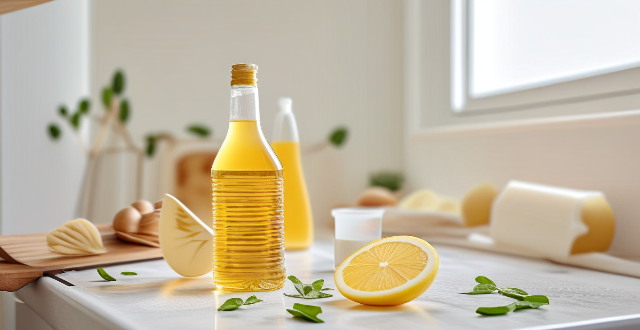
What are some eco-friendly cleaning tips for my home ?
Eco-friendly cleaning tips for your home include using natural products like vinegar, baking soda, and lemon juice; reducing plastic waste by opting for reusable cloths and containers; minimizing water usage during cleaning tasks; choosing energy-efficient appliances; and making your own cleaning solutions. These practices help maintain a clean home while also reducing environmental impact.

What are the best natural ingredients for making homemade cleaning products ?
Cleaning your home doesn't have to involve harsh chemicals or expensive store-bought products. With a few natural ingredients, you can create effective and eco-friendly cleaning solutions that are safe for your family and the environment. Here are some of the best natural ingredients for making homemade cleaning products: 1. White Vinegar: A versatile and inexpensive cleaning agent that cuts through grease, disinfects surfaces, removes stains and odors, and deodorizes the air. Use it as an all-purpose cleaner, glass cleaner, or oven cleaner. 2. Baking Soda: A gentle yet powerful abrasive that tackles tough cleaning jobs without scratching surfaces. It neutralizes acidic odors, leaves no residue behind, and can be used as a sink and tub scrub, carpet deodorizer, or laundry booster. 3. Lemon Juice: A natural disinfectant and deodorizer that leaves surfaces smelling fresh and clean. It cuts through grease, leaves a pleasant citrus scent, and can be used as an all-purpose cleaner, chrome polish, or hardwater stain remover. 4. Castile Soap: A vegetable-based soap that is gentle on skin and surfaces while still being effective at cutting through dirt and grime. It is biodegradable, eco-friendly, and can be used in various dilutions for different purposes such as an all-purpose cleaner, floor cleaner, or handwash. 5. Essential Oils (Optional): While not strictly cleaning agents, essential oils can enhance the effectiveness of your homemade cleaning products by adding antibacterial properties and a pleasant scent. Popular choices include tea tree oil, lavender oil, and lemon oil.
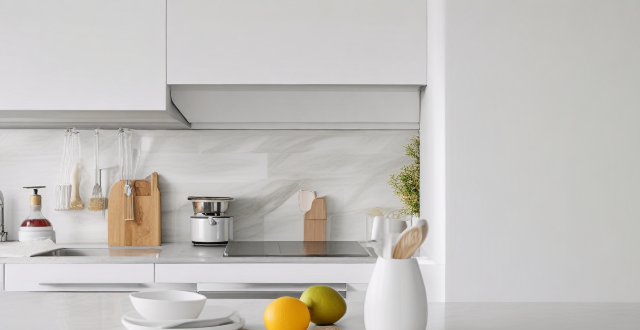
What are the best natural cleaning solutions for my home ?
Natural cleaning solutions are a great way to keep your home clean and fresh without exposing yourself or your family to harsh chemicals. Some of the best natural cleaning solutions for your home include white vinegar, baking soda, lemon juice, and castile soap. White vinegar removes stains, deodorizes surfaces, cuts through grease, and cleans windows without leaving streaks. Baking soda deodorizes fabrics, removes stains, cleans and polishes silverware and jewelry, and freshens drains and garbage disposals. Lemon juice dissolves soap scum and hard water deposits, brightens laundry, deodorizes kitchen surfaces, and removes rust stains. Castile soap cleans floors, walls, dishes, pots and pans, skin, and hair. By using these natural cleaning solutions, you can keep your home clean and fresh while reducing your exposure to harmful chemicals.

Is it possible to remove rust stains from fabric without damaging it ?
Rust stains can be removed from fabric using natural ingredients such as lemon juice and salt, vinegar and baking soda, or hydrogen peroxide. These methods are effective in breaking down the rust and lifting it away from the fabric without causing damage. It is important to test any cleaning solution on a small area of the fabric before applying it to the stain and to allow enough time for each method to work. If one method does not work, try another one until the stain is completely removed. After removing the rust stain, wash the fabric according to its care instructions to remove any residual cleaning solution and prevent further damage.
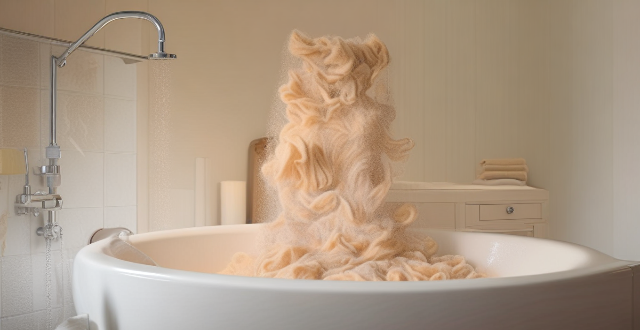
What are the best ways to remove stains from clothes ?
Removing stains from clothes requires pre-treatment, stain removers, home remedies, laundry detergent, and sometimes professional dry cleaning. Pre-treating the stain by blotting it with a clean cloth or paper towel is crucial. Commercial stain removers can be effective for various stains, while home remedies like baking soda and vinegar, hydrogen peroxide, and lemon juice can tackle stubborn stains. Applying laundry detergent directly to the stain and washing it afterward can also work. For delicate fabrics or persistent stains, professional dry cleaning may be necessary. By following these steps, most types of stains can be effectively removed from clothing.

Is it safe to use lemon juice as a disinfectant in homemade cleaning recipes ?
Is it safe to use lemon juice as a disinfectant in homemade cleaning recipes? Let's take a closer look at the science behind this question. Lemon juice has a high acidity level, with a pH of around 2, making it effective at breaking down dirt and grime. However, when it comes to killing bacteria and viruses, the acidity alone may not be enough. While lemon juice does have some antimicrobial properties due to its natural compounds like limonene, these are not strong enough to completely disinfect surfaces. In fact, studies have shown that lemon juice is not effective at killing certain types of bacteria like E. coli and Salmonella. Some homemade cleaning recipes call for combining lemon juice with other ingredients like vinegar or hydrogen peroxide. While these combinations may increase the disinfecting power, they still may not be as effective as commercial disinfectants. There are also safety concerns to consider when using lemon juice as a disinfectant. Due to its high acidity, lemon juice can be corrosive to certain surfaces like marble and granite. It can also damage metals over time. Lemon juice can cause skin irritation or burns if it comes into contact with open wounds or sensitive skin. It is important to wear gloves while using it in cleaning solutions. Additionally, some people may be allergic to lemons or their scent, which could trigger an allergic reaction when using lemon juice in cleaning products. If you are looking for natural disinfectants, there are several alternatives to lemon juice such as white vinegar, hydrogen peroxide, tea tree oil, and essential oils like eucalyptus, lavender, and peppermint oils. These alternatives have strong antimicrobial properties and can be added to homemade cleaning solutions for a fresh scent. In conclusion, while lemon juice can be a useful ingredient in homemade cleaning recipes due to its degreasing properties, it should not be relied upon as a sole disinfectant. If you are concerned about germs and bacteria, it is best to use a commercial disinfectant or one of the alternative natural disinfectants mentioned above.

Can essential oils be used in homemade cleaning solutions, and if so, which ones work best ?
Essential oils can be added to homemade cleaning solutions for natural, eco-friendly alternatives to commercial cleaners. Some of the best oils for cleaning include lemon, tea tree, lavender, peppermint, eucalyptus, and clove, each with its own unique benefits and uses. To use essential oils in cleaning solutions, choose a base like distilled water, white vinegar, baking soda, or castile soap, add the oils, mix well, test on a small area, and then clean as usual. However, it's important to always dilute essential oils before use and avoid using them around pets and children unless specified safe.
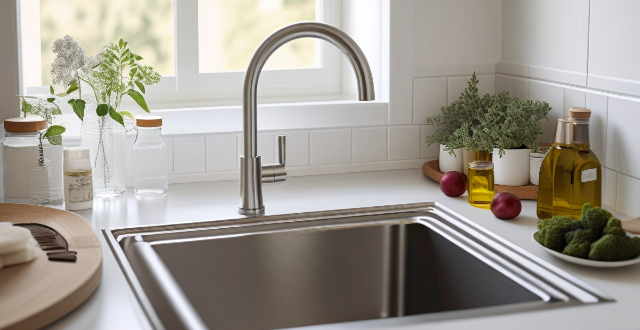
What is the best way to clean and maintain stainless steel kitchen appliances ?
Stainless steel kitchen appliances require proper cleaning and maintenance to keep them looking their best. To clean them, gather materials such as a microfiber cloth, mild dish soap, water, white vinegar, baking soda, and olive or mineral oil for polishing. The cleaning process involves removing grease and stains with a damp cloth, rinsing and drying the surface, removing stubborn stains with a baking soda paste, and polishing the surface with oil. In addition to regular cleaning, maintenance tips include avoiding harsh chemicals and abrasive cleaners, using a gentle touch when cleaning, keeping appliances away from direct sunlight and heat sources, and using protective covers when not in use.

Can I use homemade cleaners on electronic devices, or will they cause damage ?
Homemade cleaners are cost-effective and environmentally friendly, but using them on electronic devices can be risky. Some homemade cleaners, like vinegar and lemon juice, are acidic and can damage sensitive parts of electronic devices. Others, like baking soda, are abrasive and can scratch surfaces or leave a residue behind. Commercial cleaners, on the other hand, are specifically designed for electronic devices and are tested for safety. Therefore, it is recommended to use commercial cleaners on electronic devices to ensure their safety and longevity.

Is there a natural alternative to bleach that can be used for disinfecting surfaces ?
There are several natural alternatives to bleach that can be used for disinfecting surfaces, including vinegar, hydrogen peroxide, and tea tree oil. These alternatives are effective against bacteria, viruses, and fungi, and are also safer and eco-friendly compared to bleach. Vinegar is inexpensive and easy to find, but has a strong smell and may damage certain surfaces if left on for too long. Hydrogen peroxide is also inexpensive and easy to find, but can be harmful if ingested or inhaled in large quantities and may fade certain fabrics or surfaces if left on for too long. Tea tree oil is a natural antimicrobial agent that is safe for pets and children, but is expensive compared to other natural disinfectants and may cause skin irritation if not diluted properly. By using these natural disinfectants, you can keep your home clean and healthy without exposing yourself or your family to harsh chemicals.

Is there a natural way to clean stains off my clothes ?
Removing stains from clothes can be challenging, but natural methods like using white vinegar, baking soda, lemon juice, hydrogen peroxide, and salt can effectively clean various types of stains. These techniques are gentle on the environment and clothing.
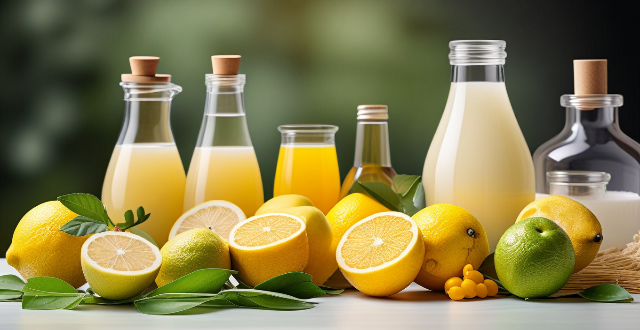
Are there any natural or eco-friendly disinfection solutions that are effective against viruses ?
The article discusses natural and eco-friendly disinfection solutions that are effective against viruses. It mentions four options: lemon juice and salt, white vinegar, tea tree oil, and hydrogen peroxide. Each option has a procedure for use and is effective in killing germs on surfaces. The article concludes that while these solutions may require more time and effort compared to chemical disinfectants, they offer a safer alternative for those concerned about environmental impact and health risks associated with harsh chemicals.

What types of disinfectants are safe to use around children and pets ?
The article discusses various types of disinfectants that are safe for use around children and pets. These include alcohol-based disinfectants, hydrogen peroxide, vinegar, baking soda, chlorine bleach (in a dilute solution), steam cleaning, and tea tree oil. It emphasizes the importance of proper usage, storage, and supervision to ensure safety for all family members, including pets.
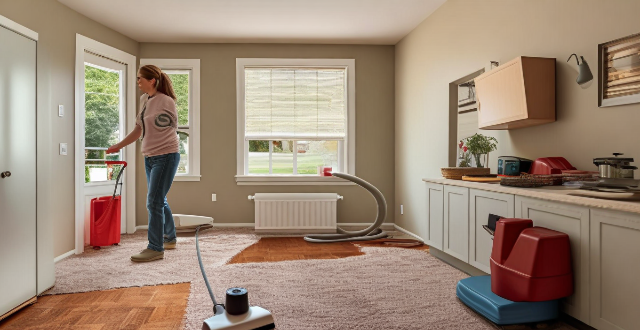
What are some tips for cleaning hard-to-reach areas in my home ?
Cleaning hard-to-reach areas in your home can be challenging, but with the right tools and techniques, it becomes more manageable. Use extendable dusters, flexible brushes, and long-handled tools for better access. Be creative with vacuum attachments, steam cleaners, and magnetic sweepers to simplify the process. Remember safety by using non-slip step stools and wearing gloves. Regular cleaning schedules and making cleaning fun can help maintain these areas.

What are some tips for running uphill without getting too tired ?
To run uphill without getting too tired, warm up properly, shorten your stride, wear proper footwear, lean slightly into the hill, focus on breathing, take breaks if needed, incorporate hill training into your routine, stay hydrated, use hand gestures, and practice mindful running.

How can I create an effective window cleaner without using alcohol or ammonia ?
In this guide, we discussed the steps to create a homemade window cleaner that is safe, non-toxic, and environmentally friendly without using alcohol or ammonia. The ingredients needed for this solution are white vinegar, distilled water, lemon juice, liquid soap (preferably natural and biodegradable), and a spray bottle. To make the solution, mix 1 cup of distilled water, 1/4 cup of white vinegar, 1 tablespoon of lemon juice, and 1/2 teaspoon of liquid soap in a spray bottle. Shake the bottle well to ensure that all the ingredients are mixed thoroughly. Test the solution on a small area first before using it on all your windows. Apply the solution onto the window surface and wipe it off with a clean, lint-free cloth or paper towel. Use a circular motion to avoid leaving streaks. Dry the windows completely with a dry cloth or paper towel. Some tips to keep in mind while using this solution are to use a microfiber cloth for best results, avoid cleaning windows in direct sunlight, use a soft-bristled brush for stubborn stains, and store the solution in a cool, dark place to prolong its shelf life. By following these simple steps, you can enjoy clean and streak-free windows while also being environmentally conscious.

Are there any risks associated with mixing certain natural ingredients in homemade cleaners ?
Using natural ingredients for homemade cleaners is a popular and eco-friendly choice, but it's important to be aware of the potential risks associated with mixing certain substances. These risks include bacterial growth, chemical reactions, skin irritation, and corrosion. To safely use natural ingredients for cleaning purposes, research their properties and potential interactions, label your cleaners clearly, store them properly, test a small amount before extensive use, and wear appropriate protective gear. By following these tips, you can ensure that your homemade cleaners are effective and safe for both you and the environment.

How do I make a natural floor cleaner that won't leave residue on hardwood floors ?
Hardwood floors are a beautiful addition to any home, but keeping them clean without leaving residue can be a challenge. Here's how to make a natural floor cleaner that won't leave any residue on your hardwood floors: Materials Needed: - 1 gallon of warm water - 1/2 cup of white vinegar - 1/4 cup of rubbing alcohol (70% isopropyl alcohol) - 1/4 cup of dish soap (natural or castile soap is best) - A clean bucket or container - A soft mop or microfiber cloth Steps to Make the Cleaner: Step 1: Mix the Ingredients In a clean bucket or container, mix together the warm water, white vinegar, rubbing alcohol, and dish soap. Stir well until all the ingredients are fully combined. Step 2: Mop Your Floors Dip your soft mop or microfiber cloth into the cleaning solution, making sure it's damp but not overly wet. Wring out any excess liquid before applying it to your hardwood floors. Start at one end of the room and work your way towards the other end, being careful not to let puddles of water sit on your floors. Step 3: Rinse and Dry After you've finished mopping, use a clean, dry cloth to wipe up any remaining moisture. This will help prevent water damage and ensure that no residue is left behind. Tips for Best Results: - Always test your homemade cleaner on a small, inconspicuous area of your floor first to make sure it doesn't cause any damage or discoloration. - Avoid using too much water when cleaning hardwood floors, as excess moisture can seep into the wood and cause damage over time. - If you have pets or children, consider using a natural essential oil like lavender or lemon in your cleaner for added fragrance and antibacterial properties. Just be sure to use only a few drops, as essential oils can be harsh on hardwood surfaces if used in large quantities.

How can I spice up my usual home-cooked meals with new flavors ?
To spice up your usual home-cooked meals, try using fresh herbs and spices, exploring global flavors, incorporating acids and sweetness, and adding textures and garnishes.
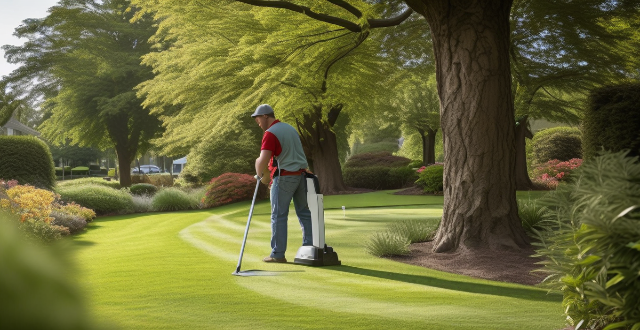
Are there any DIY tricks for getting out tough stains like blood or grass ?
When it comes to removing tough stains like blood or grass, there are several DIY tricks you can try before resorting to professional cleaning services. These include soaking the stained area in cold water, applying hydrogen peroxide directly to the stain, creating a paste with salt and cold water, applying white vinegar directly to the stain, mixing lemon juice with salt to create a paste, and mixing dish soap with baking soda to create a paste. It is important to always test any solution on an inconspicuous area of the fabric first to ensure it doesn't cause damage or discoloration. If these DIY methods fail, consider seeking professional help from a cleaning service.

What are the best stretches for cooling down after a gym session ?
After a gym session, it's crucial to gradually cool down your body. Here are the best stretches for that: hamstring, quadriceps, calf, hip flexor, and back stretches. These exercises help reduce heart rate, lower blood pressure, prevent muscle soreness, improve flexibility, and range of motion. Remember to hold each stretch for at least 30 seconds and avoid bouncing to prevent injury.